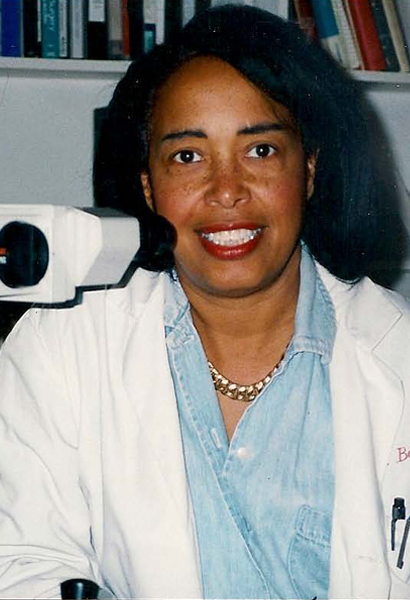

Birth: November 4, 1942
Death: May 30, 2019
Specialty: Ophthalmology
Major Contributions:
Inventor of the Laserphaco Probe
Co-Founder for the American Institute Prevention of Blindness
Holds a total of 5 US patents as well as patents in Europe, Japan, and Canada
Ophthalmologist and inventor Dr. Patricia Bath was inspired as a young girl by newspaper stories about Dr. Albert Schweitzer and his treatment of people with leprosy in the Congo. After earning her medical degree, she began a fellowship at Columbia University focused on ophthalmology.
Bath began to notice a discrepancy in eye care and that racial minorities and poor populations were much less likely to receive needed services. She learned that African Americans were twice as likely to suffer from blindness than her other patients and eight times more likely to develop glaucoma. To address this issue, she persuaded her professors at Columbia to operate, at no cost, on blind patients at Harlem Hospital Center which had been unable to offer this treatment. In doing so Bath pioneered the worldwide discipline of “community ophthalmology” which is a volunteer-based outreach to bring necessary eye care to underserved populations.
As part of her drive to help more people retain their visual abilities, Dr. Bath envisioned a way to use technology to improve cataract treatment. Cataracts are cloudy blemishes that can form in the lenses of the eye which can lead to blindness. Previously the removal surgery had been performed manually using a mechanical grinder, a harsh and sometimes risky procedure. Conceptualized in 1981, the Laserphaco Probe is a surgical tool that uses a laser to vaporize cataracts using a tiny 1-millimeter insertion to a patient’s eye. After vaporization of the cataract and lens this material is gently removed and a replacement lens inserted.
Bath’s idea was ahead of the technology of the time, and it took more than five years for her to develop the concept and apply for a patent which was granted in 1988. This treatment is considered faster, more accurate, and minimally invasive. It has been shown to be able to restore sight to people that have been blind for over 30 years.
She was awarded five patents for her inventions related to ophthalmologic procedures and in 2020 she was inducted into the Inventors Hall of Fame. Recently, it was announced that she was also going to be inducted into the National Women’s Hall of Fame as part of their class of 2024.
Written by Angela Goad
Sources:
Famous Black Inventors: Patricia Bath
Changing the Face of Medicine: Patricia BathBiography: Patricia Bath
See Also:
Laserphaco: A historical First in Medicine and Science
